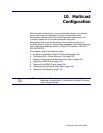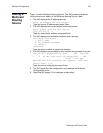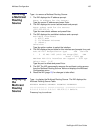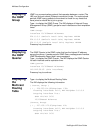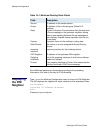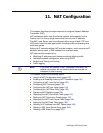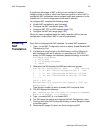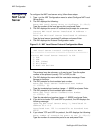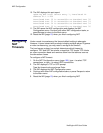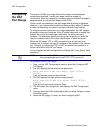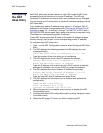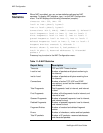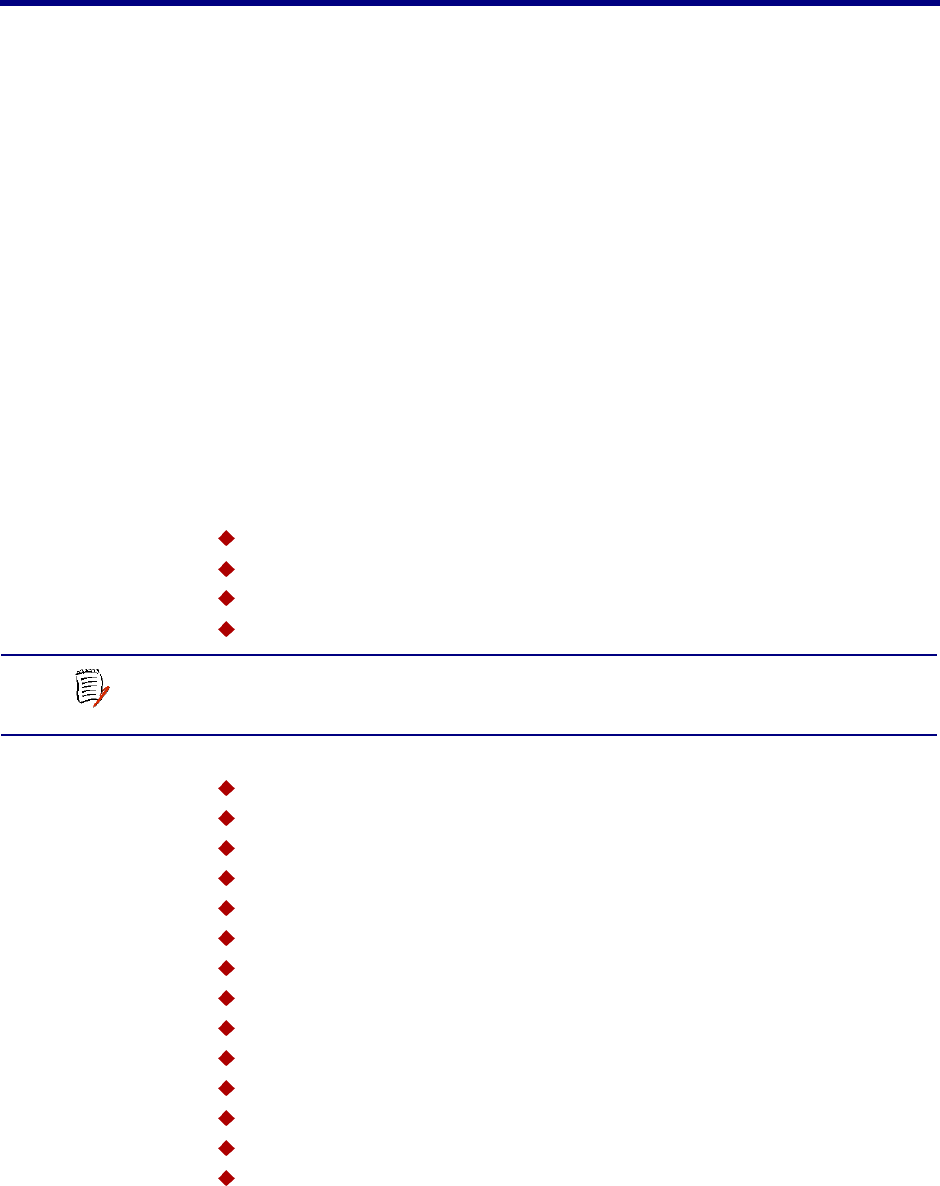
NetEngine IAD User Guide
This chapter describes the steps required to configure Network Address
Translation (NAT).
NAT multiplexes traffic from the internal network and presents it to the
Internet as if it is from a single source that has only one IP address.
The NAT Local Server may be configured with a range of both TCP and
UDP ports, which benefits applications including video conferencing and
multi-user games.
Setting up IP networks without NAT may be complex—each requires an IP
address, subnet mask, a DNS address and a default router.
NAT reduces this complexity by:
Modifying IP addresses and checksum without affecting traffic
Automatic network configuration when using DHCP
Packet-level filtering and routing
Traffic logging
This chapter contains the following topics:
Using the NAT Configuration menu (page 190)
Enabling and Disabling Enabling NAT Translation (page 191)
Configuring a NAT Local Server (page 192)
Configuring NAT Timeouts (page 193)
Configuring the NAT port range (page 194)
Configuring the NAT Alias Entry (page 195)
DIsplaying NAT Statistics (page 196)
Displaying the NAT Connection Table (page 197)
Displaying NAT Connection Details (page 197)
Displaying the NAT Local Server Table (page 199)
Displaying the NAT Alias Table (page 199)
Deleting an IP Address from NAT Tables (page 199)
Deleting a NAT Local Server Entry (page 200)
Deleting a NAT Alias Entry (page 200)
11. NAT Configuration
NOTE
If you enter an element of NAT information incorrectly, the
network connection will not function and there may be no
indication of what is wrong.



